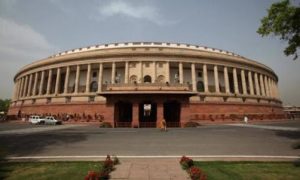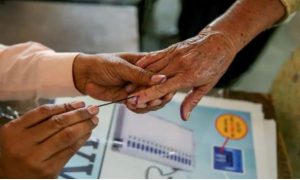The Supreme Court recently cleared the notification of seats won uncontested in the West Bengal panchayat elections and, thus, flashed the green light for the formation of panchayat boards. In the six days following the apex court’s verdict, violence has broken out as Opposition parties try to protect the small gains they made and rival factions of the ruling party, the Trinamool Congress, battle to wrest control of the lowest tier of rural self-governance institutions.
The ferocity of violence has been apparent over the past week, but it was tragically highlighted on 30 August, when a three-year-old boy was shot in the head after his mother, who had won a seat on a Bharatiya Janata Party (BJP) affiliation, voted for the Trinamool when the board was being formed for a gram panchayat in Malda district. The BJP has denied allegations that it was involved in the attack on Putul Mandal’s house. Culpability will have to be established, but the point is that despite its massive victory, it does not look as if the Trinamool has a complete monopoly of violence.
Since 25 August, around ten people have been killed in the violence, which has engulfed almost all districts. Districts which were especially badly hit were Malda, Nadia, North 24 Parganas, Purulia and Uttar Dinajpur. Further, Jhargram, Dakshin Dinajpur, Paschim Medinipur, South 24 Parganas, Alipurduar and Jalpaiguri districts in north Bengal have been quite badly singed as well.
This welter of violence prompts one obvious question: Given that the Trinamool Congress has swept the elections, winning over 85 percent of seats across the tiers of the panchayati raj structure, why should there be violence of such surreal proportions during the formation of the panchayat boards?
There are two reasons for this outbreak. First, the Opposition, especially the BJP, has done well in pockets. And violence has broken out in these pockets – especially in Alipurduar, Jhargram and Purulia – because the Trinamool Congress is loath to allow these gains to stand. Among the methods they are thus using to establish control is intimidation to make independent candidates and those elected for other parties join the ruling party. Obviously, that is not a strategy that has worked everywhere. In Amdanga, North 24 Parganas, which has witnessed some of the worst bouts of violence, the Communist Party of India (Marxist), enfeebled though it may be, has contributed to the violence to no mean degree. The Malda case mentioned earlier, and the violence during the elections, have shown that the BJP is no pushover.
The huge stockpiles of weaponry – mainly crude bombs – seized by the police from across the state points to the fact that all parties had been preparing for the initiation of the process of forming the panchayat boards. Chief minister Mamata Banerjee has repeatedly accused the BJP of importing muscle from neighbouring states.
Second, the sweep of the Trinamool’s victory itself suggests a reason for the violence. With over 85 percent of seats with the ruling party, there has been a rush for control of the resources that come along with control of the panchayats, each of which dispenses Rs 10 crore annually. Lack of proper oversight and widespread corruption make control of panchayats a very lucrative proposition. The Trinamool has been riven by factionalism from its inception. This has been exacerbated by the influx into it of members of other parties, especially after its victory in the May elections. It is not surprising, therefore, that much of the violence the state has been witnessing has been, in fact, a result of Trinamool factions squaring up against each other. The first death, in Islampur, Uttar Dinajpur, last Saturday was caused by battles between two Trinamool factions.
The intra-party battles point to a phenomenon that will worry Trinamool boss Mamata Banerjee, especially as she gears up to play a bigger role in national politics. This is the Trinamool leadership’s increasing loss of control over its cadres. Even at the best of times, the party was not known for its organisational coherence. Compared to the CPM’s storied organisational structure, with a virtually unparalleled unity of command, the Trinamool has always been shambolic, more of an anti-Left Front movement than a party. With its exponential growth, whatever vestiges of control may have existed have been quickly eroded.
Banerjee, thus, has a problem on her hands, which is to a large extent the result of the party’s drive to eliminate any meaningful opposition. She will, however, have to re-establish control. To do that, she will have to do something that is completely foreign to her temperament and political style – she will have to delegate authority on the way to creating a simulacrum, at least, of a party structure.
This is important for another reason. It is absolutely necessary to root out the more egregious forms of corruption from the gram panchayats, from a selfish rather than purely altruistic vantage. It has become clear, for instance, that the Trinamool’s relatively poor performance in the tribal-dominated districts of Jhargram and Purulia resulted not from a lack of development in an absolute sense. On the contrary, commentators are more or less unanimous that substantial development work was done there. What had caused disaffection was corruption, which had led to coteries trying to (and often succeeding) in devouring the spoils of office.
But the fundamental character of the Trinamool Congress as a political formation, especially the iron control Banerjee seeks to establish and the consequent neglect of organisational health, militates against a putative project of streamlining and structural refurbishment. Observers may watch the space but would be well advised not to hold their breaths.
For more updates: Like us on Facebook and follow us on Twitter & Instagram




































